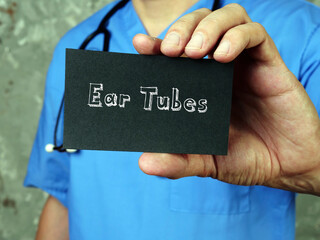Introduction
Ear tubes are a common treatment for ear infections and other ear problems. They work by improving the flow of air into the inner ear. This can help to relieve ear pain and improve hearing. Ear tubes are usually safe and easy to use, and there are many benefits to having them. Read on to learn more about these benefits, and why you might want to consider having an ear tube performed on your ear.
What are the benefits of having an ear tube?
Ear tubes louisville are a treatment for ear infections that don’t respond to antibiotic treatments. Ear tubes are inserted into the ears through the nose and pulled out through the mouth, which removes debris and infection from the ear. Ear tubes may also be used to treat other conditions like chronic otitis media or tinnitus (ringing in the ears). Ear tubes have many benefits for patients, including improved hearing, reduction in irritability, and decreased risk of further ear infections. Additionally, ear tubes often allow patients to resume normal activities more quickly than surgery would.

How ear tubes work
If you’re a patient who is struggling to hear well, ear tubes may be the answer. Ear tubes are inserted into the ear through the external auditory canal (EAC), and are then sealed off with a rubber band or other fixator. This allows the ear to function more normally and helps to improve hearing. Ear tubes have many benefits, including reduced wax build-up, increased hearing, and decreased incidence of ear infections. They are usually recommended for patients who experience significant hearing loss or frequent otitis media (ear infection). If you’re considering ear tubes, it’s important to speak to your hearing specialist to find out if they are the right option for you.
What type of surgery is involved in having ear tubes inserted?
Ear tubes are inserted into the eardrum to treat otitis media, a condition where fluid accumulates in the ears. The surgery is done under local anesthesia and takes about 20 minutes to complete. Ear tubes function as a way of draining the accumulated fluid from your ear and helps in restoring hearing.
What are the different types of ear tubes?
There are three types of ear tubes- open, endotracheal, and tympanostomy. Open ear tubes are inserted into the eardrums through a small incision and left in for a short period of time- typically days. The benefits of open ear tubes include relief from obstruction or pain, a decrease in ear infections, and improved hearing. Endotracheal tube is a type of ear tube that stays inside the eardrum. It’s usually inserted through a larger incision in the side of the head and can be left in for an extended period of time- weeks, months, or even years. The benefits of endotracheal tube include relief from obstruction or pain, a decrease in ear infections, and improved hearing. Tympanostomy tube is the most common type of ear tube and is inserted through a small hole in the eardrum directly into the middle ear. It’s usually left in for an extended period of time- weeks, months, or even years. The benefits of tympanostomy tube include relief from otitis media (ear infection), decreased need for antibiotics, and improved hearing.

Conclusion
Ear tubes are a common treatment for ear infections and other ear problems. They work by improving the flow of air into the inner ear, which can help to improve hearing and relieve pressure. If you are considering ear tubes for yourself or a loved one, make sure to read our blog to learn all about the benefits of ear tubes louisville. We hope that this article has given you all the information you need to make an informed decision. Thank you for reading!

